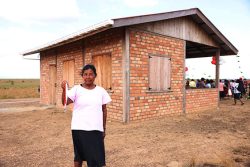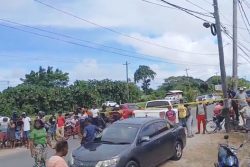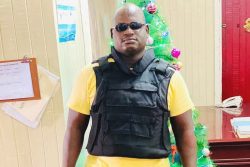For some people, living away from the capital may present a challenge but for the residents of Kuru Kururu, they are satisfied with life in their community and regard it as “a peaceful place to live where everyone gets along with one another.”
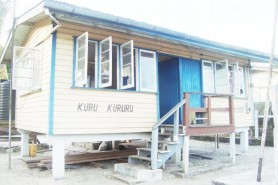
Kuru Kururu is located along the Linden-Soesdyke Highway and boasts infrastructure which may be the envy of some urban communities. They are served with electricity and water, although if the well breaks down they either have to collect rainwater or fetch water from the creek .
“It’s a quiet village, most people are farmers,” said Sylvia Calvan, a resident in the area for the past thirty years. She noted, however, that within the last year, there had been an increase in the number of persons moving into the village from the Georgetown and the East Coast, because of flooding and threats from the sea. The current population is estimated to be around ten thousand, comprising various races.
“One thing this community got a lot of is churches; the only things lacking are a mosque and temple,” said Jeanette Frank, the librarian.
Economy
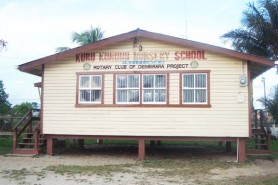
Where the economy of the village is concerned, Frank told Sunday Stabroek, “it’s predominately eddo production. We export a lot of eddoes.” This, together with poultry-rearing makes up the main economic activity of the inhabitants. Residents said that despite the volume of eddoes produced, they had a ready export market available. One resident, Sherry Narine related that it was a common sight to seek truckloads of bagged eddoes being transported out of the community on a daily basis. “Whether the price is up or down, eddoes always selling,” she added.
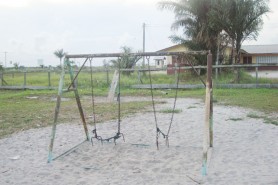
She did concede that there were not a lot of options in terms of jobs, and that those who were not involved in farming sought employment in companies nearby, such as Gafoor’s, Ricks & Sari and Bounty Farm. However, the recent closure of Barama was affecting many people currently. A small percentage of persons worked in Georgetown.
There was once a time when transportation posed a problem, but now there are several buses which ply the route and take a passenger to the nearest point to their destination. The only problem is that when the weather is dry and the sand thickens, the buses and cars go only as far as feasible, and refuse to venture further. Thus, the residents highlighted the need for the paving of the main roads connecting various parts of the village.
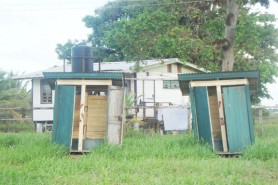
On the health front Frank said that they now had a doctor residing within the community after a very long time, and that this had improved the quality of service at the health centre. However, Narine qualified this by saying that, “when you go there, they neva got drugs.” She explained that the doctor on duty just writes a prescription for the required medication, and residents then have to go to a pharmacy at Soesdyke to have it filled. “Is a good thing, we got a pharmacy nearby,” she nevertheless remarked.
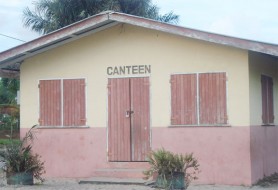
Police
While the community has a police outpost, the building is in need of repair. The two ranks stationed there have to make do with a two-room building which has broken windows. One room serves as a barrack room while the other is the office. There is clearly need for more space.
One of the ranks told this newspaper that crime in the community was minimal. He said the major problems were the stealing of farm produce, property disputes and some amount of domestic violence. Thus far, however, major crimes had been limited. Apart from a proper building, the need also exists for a vehicle so that they can patrol the various parts of the village. Calvan added that the police often rely on residents’ vehicles to move around the community.
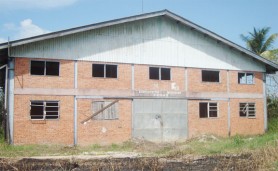
Education
The resource centre which is an arm of the National Library provides books for the children and adults. According to Frank who is in charge of the centre, it is fully utilised by the children after school who gather there to read or borrow books. She said that the focus was on encouraging more reading among them, and to that end there was a book club which had been in existence for the past 24 years. It is run by a retired teacher who devotes her spare time to teaching reading.
There is a nursery and primary school catering for the community’s formal educational needs. The nursery section has 150 children and is staffed by seven teachers and a headmistress. While the building has adequate furniture and teaching aids, there were complaints about the termite infestation. There is also the need for a proper sanitary block since the children currently have to use two dilapidated latrines. There is also no recreational area for the nursery children, and the swing and see-saw in the school’s compound are non-functional.
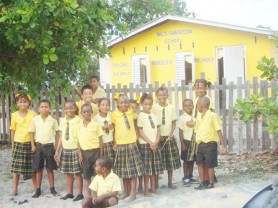
The primary department includes an annexe which provides secondary tuition for those who do not attend secondary school. The school has 794 students who are taught by 21 teachers. However, there are only two teachers for the common entrance class which has 126 children. This is a major concern for the residents, who believe there is a need for more teachers so as to provide adequate attention and instruction for the children. Narine said that her son told her that he had to sit on the floor for two days and had been given a broken-down desk to use; as such she identified the need for more furniture.
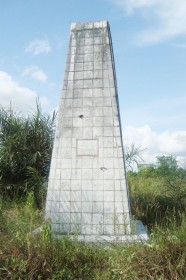
Calvan, a former cook who provided meals for the school’s hot meals programme complained about the closure of the programme which she said had helped children who could not afford lunch. She said that providing meals ensured that these children stayed in school the whole day. The canteen now stands empty and abandoned. While biscuit and juice is provided for Grades 1 and 2, Calvan was convinced that a hot meal was better: “There are some children who live three miles away from the school; this programme was really doing good for them.” Frank chimed in with, “What we need is food.”
The Rotary Club would usually donate a bag rice and 60 lbs chicken every fortnight to aid the hot meals programme, but since there is no cook, this has been discontinued.
For school leavers, the Kuru Kuru Cooperative College has provided an opportunity for girls to be trained in sewing, knitting and embroidery. Frank said that as a consequence of this programme they had seen significant changes in the attitude of the girls. She credited the counselling received at the college with encouraging positive behavioural changes.
“We need a high school,” said Roy, another resident. He said that the majority of secondary school students attended schools in Georgetown and the transportation cost was burdensome on the parents. A secondary school in the community would bring some relief to the parents, he said. He went on to say that the issue had been raised at several community meetings but that nothing had been done to date.
The lack of recreational facilities for youths was another concern expressed. Narine said that she had cleared a piece of her land to be used as a play area for them but the lack of gear was a problem. With nothing to occupy their free time, some youths were adopting the habit of smoking cannabis, which was noted as a growing concern in the community. “We have a lot of youth idling, we need something for them to do,” said Patrick.
“If we have a community spirit, we can become bigger than we are. We have the eddo industry. What else do we want?” asked Frank, who added, “if people cooperate more would get done and we won’t have to depend on others.”
“People are making an effort to make their lives better,” Calvan said of the residents.
Despite the fact the community was some distance away from Georgetown, that did not seem to bother residents. They had access to the majority of services and cherished being away from the hustle and bustle of town. Narine said, “It’s not a bad area, everybody gets along nice.”


